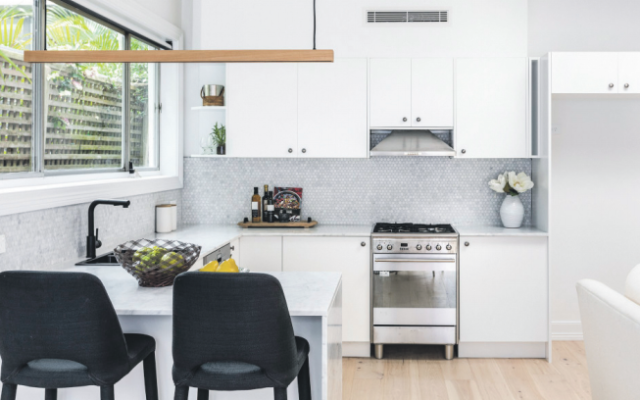Setting the perfect scene
Embarking on a home design project often involves multiple moving parts, and with many keen renovators jumping on the DIY bandwagon, interior designer Luke Davidson dishes out some insightful advice to Belle Kwan.
Q: With numerous COVID-related lockdowns and restrictions enforced over the past 18 months across Australia, many people took the opportunity to dive into home renovation and improvements. Why do you think it was such a natural response for people during this time?
People were spending a lot more time in their homes, so I think when you’re staring at the same four walls every day, you start looking around and asking whether you actually love this space, whether it is working for you now, and what are your new needs. People needed to change up their space and I think that is where we started to see huge changes in trends.
Q: Beyond the practicality of a living space, what design and aesthetic did you see people leaning towards, and did looks take second place behind practicality?
Yes, definitely. I do think the main three things that people wanted in their home were a sense of calm, more nature and greater comfort. One of the most popular trends that emerged was sophisticated ‘cottage core’, which people also like to call granny chic. It’s just about putting more character in your home and mixing a lot of personal elements to make your personal space more homely. People saw their homes as not just a display, it now had to be comforting and comfortable as well.
Q: What are some of the most common mistakes people make when undertaking DIY projects?
Viewers of home improvement and renovation shows like The Block often don’t realise that what they see on TV are condensed segments of an actual lengthy project, and often end up with a warped perception of what it takes to go through a renovation. I think the two main issues people encounter are budget and time blowout. The biggest mistakes that people make often happen in the pre-planning stages. My advice is that you can never be too organised. Getting your drawings done before you even start on anything else, and choosing your finishes and fittings at the earliest stage is also crucial, particularly during the pandemic and extended wait times. Planning is key.
Q: You mentioned that keeping to a budget often becomes a challenge. What would be some useful tips to bear in mind?
Spend time doing your homework and get as many quotes as you can. At the same time, it often pays to look beyond the big brands. Builders or contractors may give you a quote that is thousands of dollars more expensive if you only decide on your finishes once the project has commenced. It’s really important to choose which are your hero elements. In a build, quality is obviously the most important thing and what is going to save you money in the long run, but I don’t think quality always means the most expensive. If you’re mixing high and low-priced points in a room, you can achieve a great outcome for a lot less.
Q: Tell us a bit about Inscene and what inspired you to get this business running.
Inscene is an all-in-one organisation platform that breaks down your home into individual rooms and projects, and allows you to set tasks for your builder, designer and yourself. It gives you that organisational foundation and planning for your renovation, and documentation that allows you to explore trends and play with finishes. Through the pandemic, I wanted to work out a way that I could get into my client’s homes without physically being there. I utilise this virtual reality technology where I could send a scanner to their home and do a full 360-degree scan, virtually walk through the home and do accurate measurements. Inscene has given us access to jobs anywhere in Australia and has made interior design services and tools more accessible for everybody.


comments